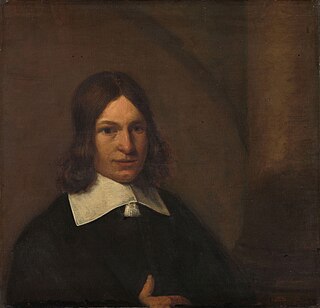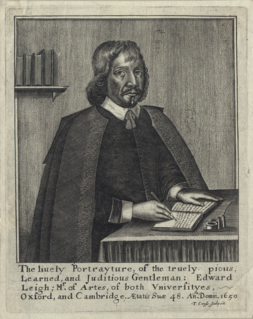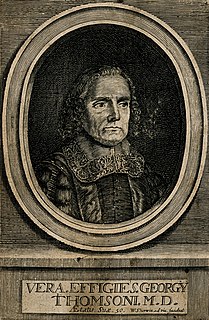Related Research Articles

GovertTeuniszoon Flinck was a Dutch painter of the Dutch Golden Age.
The 1711 Sales Auction Catalogue of the Library of Sir Thomas Browne highlights the erudition of the physician, philosopher and encyclopedist, Sir Thomas Browne (1605-1682). It also illustrates the proliferation, distribution and availability of books printed throughout 17th century Europe which were purchased by the intelligentsia, aristocracy, priestly, physician or educated merchant-class.

Pieter de Hooch was a Dutch Golden Age painter famous for his genre works of quiet domestic scenes with an open doorway. He was a contemporary of Jan Vermeer in the Delft Guild of St. Luke, with whom his work shares themes and style.

Sir Thomas Widdrington SL was an English judge and politician who sat in the House of Commons at various times between 1640 and 1664. He was speaker of the House of Commons in 1656.

George Ent was an English scientist in the seventeenth century.

Henri Albert de La Grange d'Arquien, Marquis of Arquien was born in Calais, France, the son of Antoine de La Grange d'Arquien, governor of Calais, and Anne d'Ancienville. His surname is also listed as Lagrange.
Anthony Burges or Burgess was a Nonconformist English clergyman, a prolific preacher and writer.
John Canne was an English Independent minister and printer.
Roger Drake (1608–1669) was an English physician, and a minister of strong Presbyterian convictions.

Daniel Whistler (1619–1684) was an English physician.

Sir Edward Leigh was an English lay writer, known particularly for his works on religious topics, and a politician who sat in the House of Commons from 1645 to 1648.

Thomas Cogan was an English nonconformist physician, a founder of the Royal Humane Society and philosophical writer.

George Thomson was an English physician, medical writer and pamphleteer. He was a leading figure in an attempt to create a "College of Chemical Physicians", a rival to the established Royal College of Physicians. He rejected the traditional Galenic approach to medicine and argued against medical bloodletting, purging and the doctrine of curing by "contraries". He performed a splenectomy on a dog which stimulated debate in scientific and medical circles, and challenged prevailing medical theories about the body.
Henry Hickman was an English ejected minister and controversialist.

Johann Sperling was a German physician, zoologist and physicist, deacon and Rektor of the University of Wittenberg. He was among the first to practise zoology as a natural science, writing a first handbook about animals, Zoologia physica.
References
-
 This article incorporates text from a publication now in the public domain : Lee, Sidney, ed. (1896). "Primrose, James (d.1659)". Dictionary of National Biography . 46. London: Smith, Elder & Co.
This article incorporates text from a publication now in the public domain : Lee, Sidney, ed. (1896). "Primrose, James (d.1659)". Dictionary of National Biography . 46. London: Smith, Elder & Co.